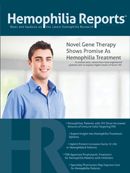Publication
Article
Hemophilia Reports
Researching the Cause of Rheumatoid Arthritis
Despite decades of investigation, the causes of rheumatoid arthritis (RA) have remained elusive.
D
espite decades of investigation, the causes of rheumatoid arthritis (RA) have remained elusive. In fact, research has indicated that there is unlikely to be a single root cause. Different paths of investigation have provided sometimes contradictory lines of evidence leading to multiple biologic triggers setting off the autoimmune response that causes RA.
Recently, animal studies have produced findings that argue for a broader causal theory that supports a targeted “cure.” Researchers who developed a mouse model for RA found that it took multiple regulatory T cells, rather than any specific one, to prevent the immune system from generating the tissue-specific inflammation that is the hallmark of RA. The cumulative effect of an array of diverse T cells introduced into the mouse was more effective in mediating the RA response than the single T cell that investigators expected to activate the receptor and trigger an inflammatory response. It was the diversity of the array that protected against RA. If the diversity is not present, the researchers reported, the immune system attacks the joints.
“Our results, surprisingly, show that suppressing the immune response against a single target will not shut down the inflammatory response that causes rheumatoid arthritis.”
The Wistar Institute announced the results of this research in the May 2012 issue of The Journal of Immunology. Andrew Caton, PhD, the senior author, said, “Our results, surprisingly, show that suppressing the immune response against a single target will not shut down the inflammatory response that causes rheumatoid arthritis. Instead, an array of inflammation-stimulating antigens may be involved in causing the disease.” An array of regulatory T cells is required to temper it.
The mouse model investigations also pointed to a possible reason that RA affects membranes that line the joints. Regulating T cells also influenced receptor T cells to produce interleukin-17 (IL-17), which travels through the body’s lymphatic system. The lymphatic system drains into the joints. Caton suggests that, “…the joint inflammation is a side effect of the natural tendency of these cells [IL-17] to accumulate in these areas of the body.”
Source:
The Wistar Institute. Regulatory immune cell diversity tempers autoimmunity in rheumatoid arthritis [press release]. Philadephia, PA: Science Daily; May 8, 2012. Available at: http:// www.sciencedaily.com/releases/2012/05/120508142626.htm. Accessed May 21, 2012.
Oh S, Aitken M, Simons DM, et al. Requirement for diverse TCR specificities determines regulatory T cell activity in a mouse model of autoimmune arthritis [published online ahead of print March 26, 2012]. J Immunol. doi:10.4049/ jimmunol.1103598.
